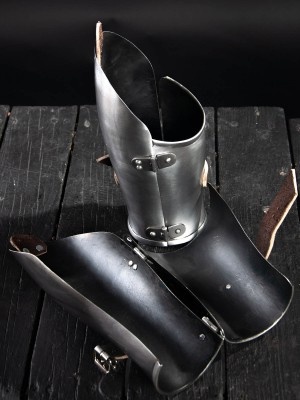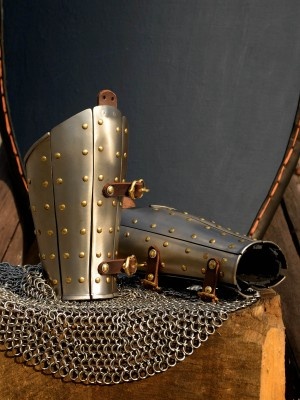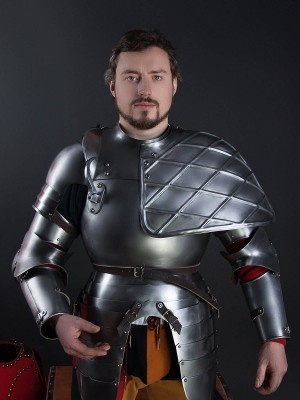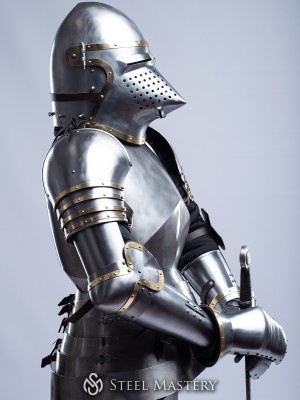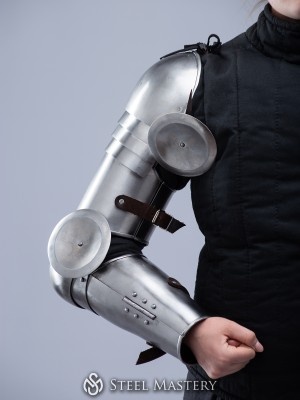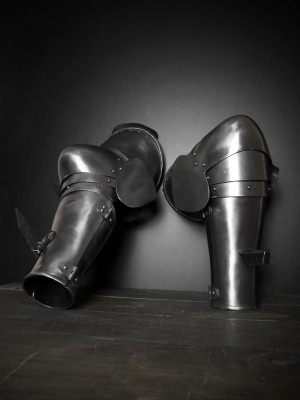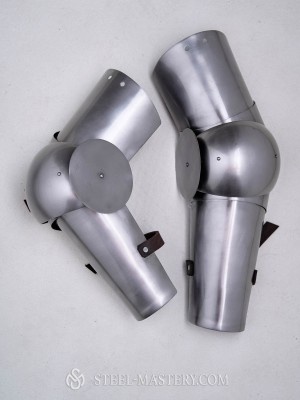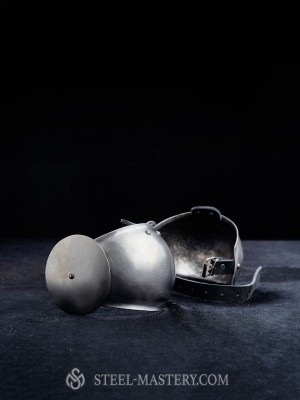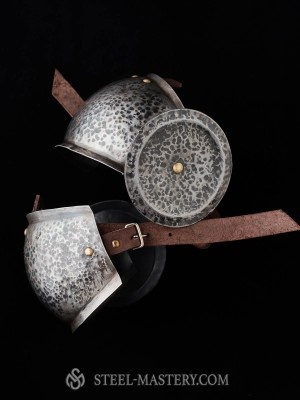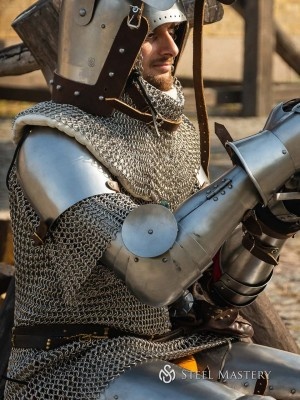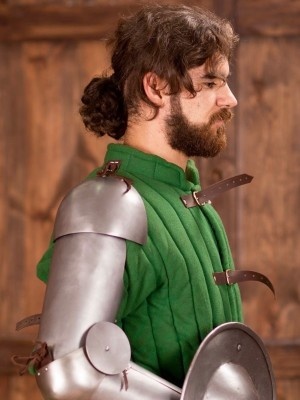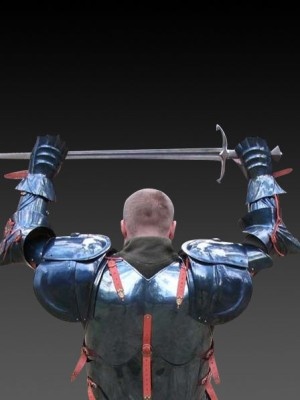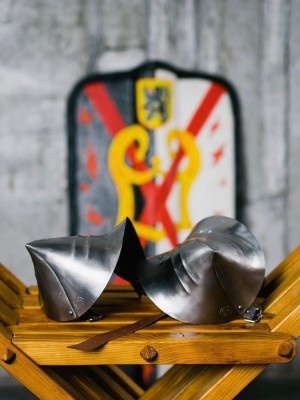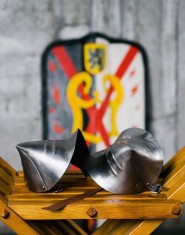Über Metallarmschienen,Armkacheln und Plattenarme
Medieval bracers, elbow caps and full plate arms are represented in this section. All models of arm protection are handcrafted and made-to-measure. We make them according to the original armour, which you can see in the old manuscripts, in museums or on the gravestones.
To order this custom armour, you just need to:
- Open the wished item;
- Choose type and thickness of metal (for example, stainless steel 1.5 mm);
- Choose buckles and rivets, colour of leather belts;
- Define the decoration (such as brass strips or etching);
- Choose the type of finish treatment.
If there are some difficulties with choosing, please contact our manager. We’ll help you to define your size, required model and its complement.
Once all options have chosen, you need to add item to the cart and make a payment. After that, manager will contact you with measurement request and specification of order’s details.
All samples of full plate arms, forearm defense and elbow caps are perfect for participation in the tournaments of medieval fencing, historical festivals, bohurts and reenactment events. Depending on the complement, such defense is compliant to the standards and rules of such social movements, as SCA (The Society for Creative Anachronism), HEMA (Historical European Martial Arts), HMB (Historical medieval battles).
If you didn’t find the wished armour in this section, we can make it individually for you. Just send picture with detailed description to [email protected]. Then we will quote you and discuss details of order.
Arm protection began to progress in the Europe only in the XIII century. Some historians connect this fact with influence of the Asian gunnery. Approximately in the 1250’s, first laminated bracers had appeared. However, in hundred years, they were developed into the tubular type armour. The earliest sample, which was survived, there are bracers dated by the XIV century. They were founded during excavation on the island Bornholm (Denmark).
To the XIII century, elbow caps were small-sized and round-shaped. In time, they gained prominent conical shape. However, for free arm’s bending, a low cut was required. That’s why a special fan was riveted to the outer side for better joint protection. Starting the XIV century, such fan had being hammered off together with cap as a single part.
In the early XV century, Milanese armourers started to create full plate arm defense. All construction consisted of spaulders, bracers and elbow caps, which were jointed together with moving rivets. Though, there was total protection of limb. Besides, complex process of armour’s wearing has been simplified.
Small round plates “rondels” were changing a direction of opponent’s blow. Enlarged elbow cup on the left arm was typical feature of Milanese armour. Together with large pauldron, this part of armour could take up the slack of the heavy shield.
Limb defense made by Nurnberg’s armourers had distinctive features of the gothic style. Pointed shell-like elbow caps were of different size. Relief lines highlighted angularity of armour. Bracers and steel bicep protection also had ridged surface and narrow grooves for blows’ rejection.
Nevertheless, not all parts of medieval plate protection were a complete whole. For example, in the early XVI century, some types of elbow caps had removable detail, which covered inner part of elbow. It could be attached with leather strings, if required.
Hired warriors from lower orders were allowing themselves only defense of elbow joints. Separate parts were fixed with leather belts on the sleeves of padded underarmour, such as gambeson. Only noble knights could afford full arm protection with such decoration, as engraving, etching, cut ornamental parts on the edges and brass elements.

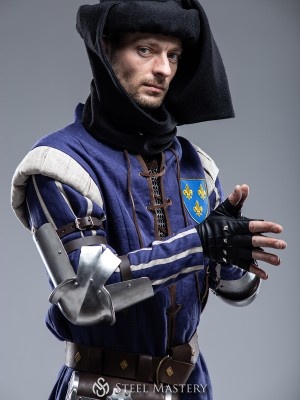
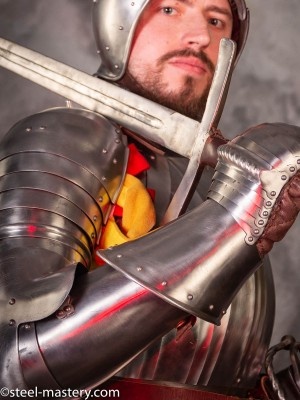
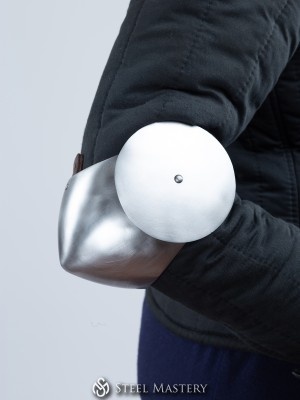
-0-2-0-1-2-300x400.jpg?v=1746523880)
